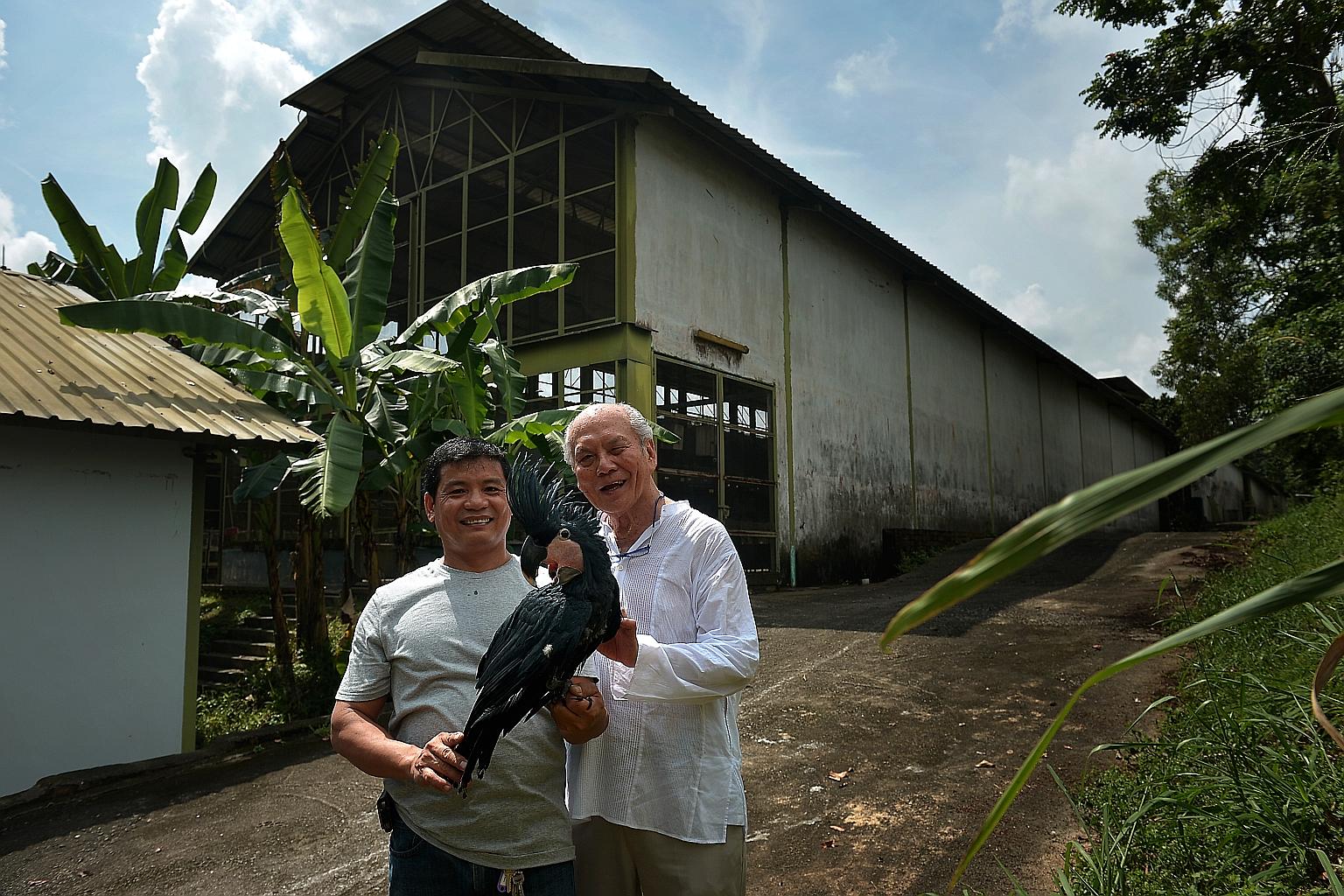Bird sanctuary with 3,000 exotic birds faces uncertain fate
Farm in Mandai allowed to breed them will have to return state land to SLA at end of lease
Sign up now: Get ST's newsletters delivered to your inbox

Mr Rosendo Jacildo, 45, curator (left) and Mr Daniel Teo, 72, co-founder of the Mandai Birds Sanctuary, showing off a three-month old black palm cockatoo which is an endangered species.
ST PHOTO: KUA CHEE SIONG
Ng Huiwen
Follow topic:
For more than two decades, a bird sanctuary located down a winding lane off Mandai Road has greeted visitors with a cacophony of whistles and chirps.
Within its 2ha compound at 31 Lorong Lada Hitam, the Mandai Birds Sanctuary boasts eight aviaries with more than 3,000 exotic birds across 124 species.
But its fate now remains uncertain. The Singapore Land Authority (SLA) has asked for the state land back by May.
It has previously been reported that the idea of relocating the Jurong Bird Park to Mandai as part of a proposed rejuvenation of the Mandai precinct is being explored. However, it is unclear if the two are linked.
The sanctuary's co-founder, Mr Daniel Teo, who is also a property developer, received a final notice to vacate two months ago.
"It is very sad," said the 72-year- old. "We've thousands of birds here, some of which are endangered species too. And we've staff who've been with us since the start. What will happen to us now?"
Mr Teo and his friend, Mr Patrick Tay, pumped in millions to start the sanctuary, which they hoped would go beyond its primary purpose of commercial breeding to encourage conservation efforts of endangered species, such as the black palm cockatoo.
It is one of only two farms in Singapore approved by Cites (Convention on International Trade of Endangered Species of Wild Fauna and Flora) to breed exotic birds.
These legally-bred birds bear a unique number on rings attached to their legs and are registered with the authorities.
Each year, the sanctuary sells and exports up to 1,300 birds, mainly from the parrot family, to organisations and private collectors both locally and regionally, such as Japan, Taiwan and Thailand.
Its most popular species is the macaw, because i t is easy to train, said Mr Teo. A hyacinth macaw can sometimes cost up to $40,000.
When the sanctuary's 20-year lease ended two years ago, Mr Teo wrote to the Ministry for National Development to appeal for an extension. While he was granted another two years, Mr Teo has since explored and exhausted every possible place to relocate the sanctuary, which includes an abandoned factory building in Sungei Buloh.
Mr Rupert Gwee, a parrot breeder, who has more than 1,000 birds at the sanctuary, said: "We know that the SLA needs the land for its use, but what we're really hoping for is to coexist with the developments that will be there in the future."
The 53-year-old added: "Over the years, it has been a place that has helped us keep our passions alive."
The sanctuary has also provided academics and specialists from around the world a place to carry out research and development in bird breeding.
It opened its doors to veterinary students from the University of Melbourne 10 years ago, and they spent a few months studying cross breeding and hatching processes.
Two weeks ago, the programme welcomed its 15th student, said Mr Teo, who had hoped to turn the place into an education centre .
An SLA spokesman told The Sunday Times that no further extension can be granted to the site as "the development timeframe has been firmed up".
He added: "We have explained this to (the sanctuary) and the Agri-Food and Veterinary Authority will assist to explore various options for the birds."

